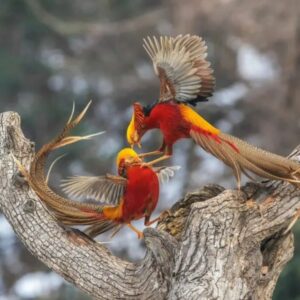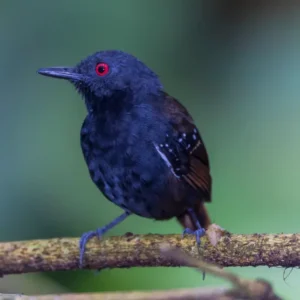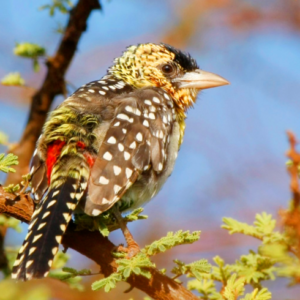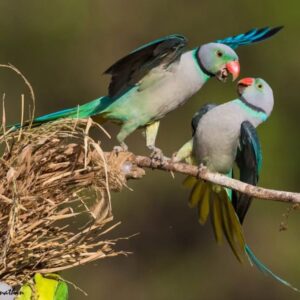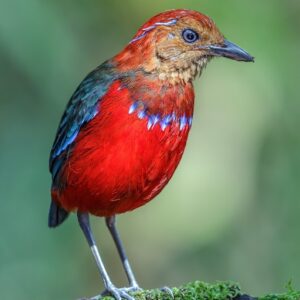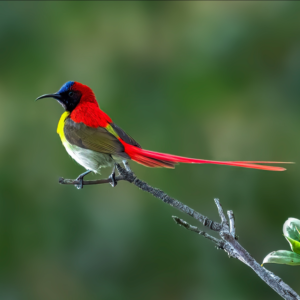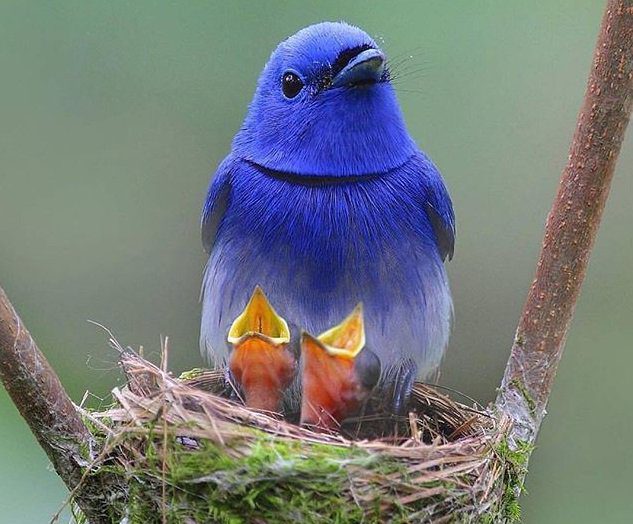
Distinguished by its bright blue feathers, the black-naped monarch exhibits clear sexual dimorphism. Males display a striking black spot on the back of the head and a black half-neck that distinguishes them. On the contrary, females have fainter olive-brown wings and have striking black markings on their heads.

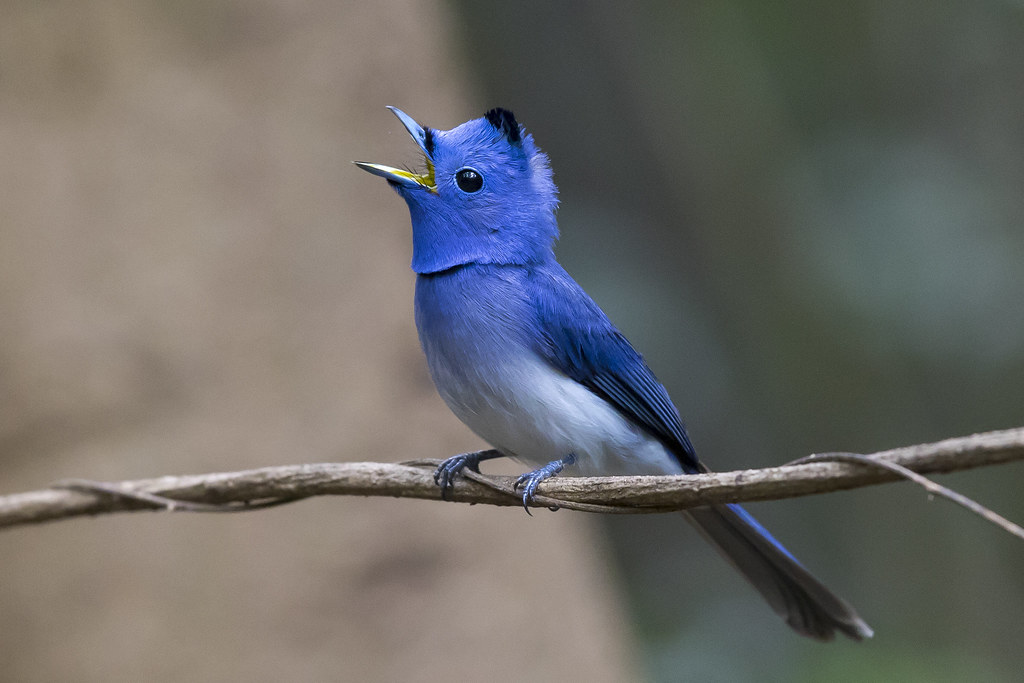
The breeding range of the black-naped monarch extends from India and Sri Lanka to Indonesia and the Philippines, encompassing diverse well-wooded habitats and thick forests. Although primarily residing in these regions, the species exhibits local seasonal movements, adding to its dynamic behavioral patterns.
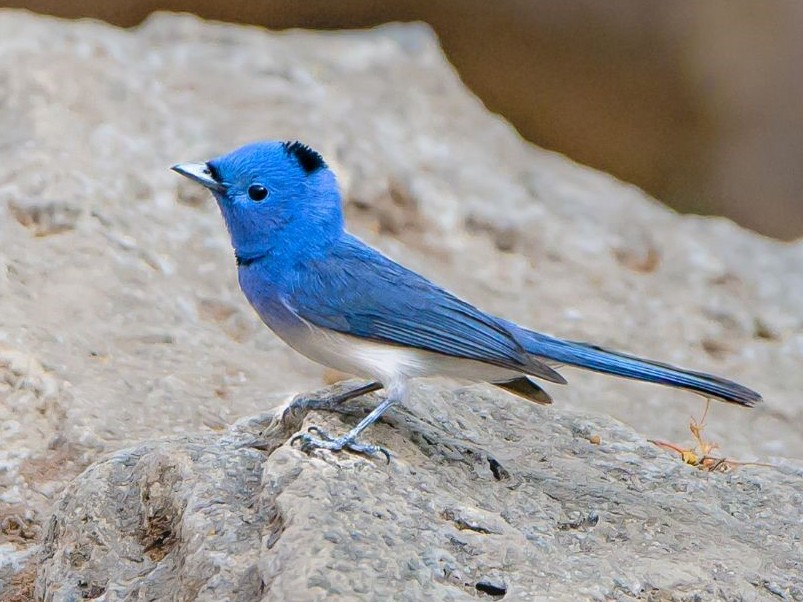
An insectivorous species, the black-naped monarch uses fly-catching techniques to feed. It is often seen sitting in a prominent, upright position, resembling the posture of a shrike. When in a state of alarm or nervousness, the feathers on the nape of the neck rise to form a distinctive pointed crest. Monarchs are known to join mixed-species feeding flocks, playing an important role within these flocks, especially in regions such as the Western Ghats. Its activities are observed mainly in the understory of the forest crowns.
Research conducted in Sri Lanka has shed light on the impact of human disturbance on the behavior of black-naped monarchs. These disturbances have been observed to cause birds to retreat from disturbed edges by approximately 75 metres, increasing the sensitivity of their habitats.

Alternative names for this captivating bird include black-naped blue monarch and black-naped monarch flycatcher. In particular, certain authorities classify two ancient species, H. a. blasii and H. a. puella, like species of the pale blue monarch (Hypothymis puella).
In conclusion, the black-naped monarch is a symbol of the diversity and charm of nature. Its distinctive appearance and captivating behavior have made it an object of admiration and scientific interest, contributing to our understanding of avian life in the rich landscapes of Asia.
